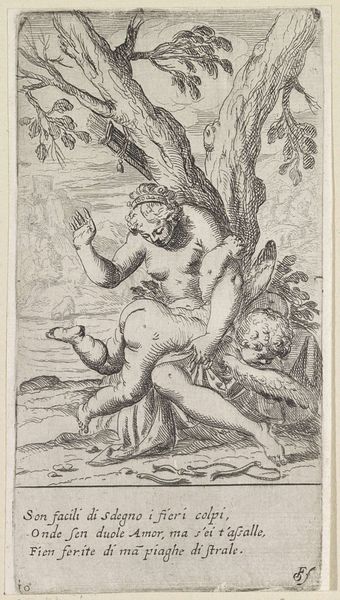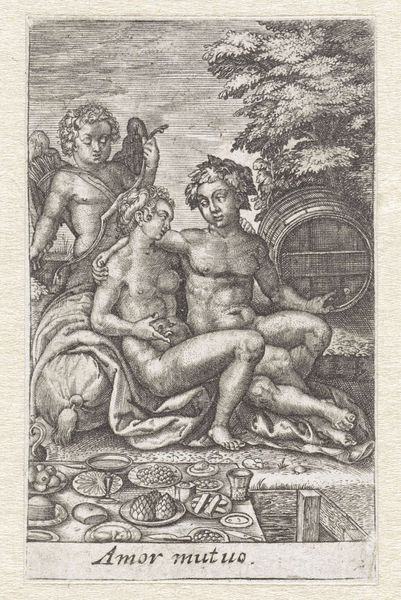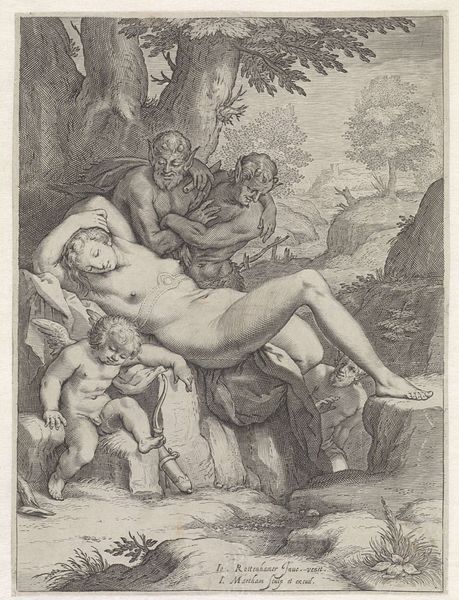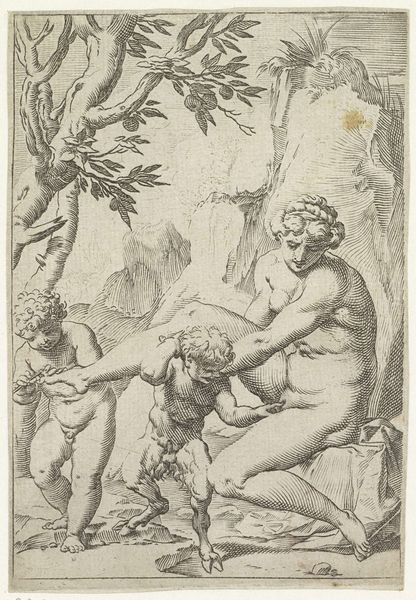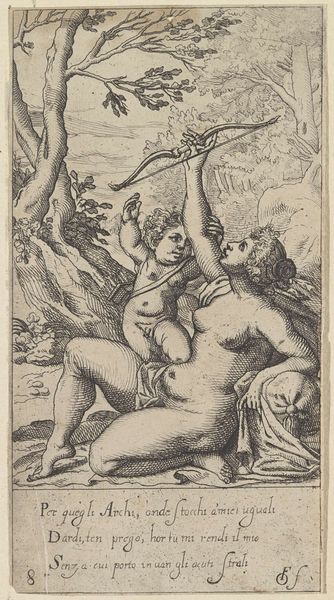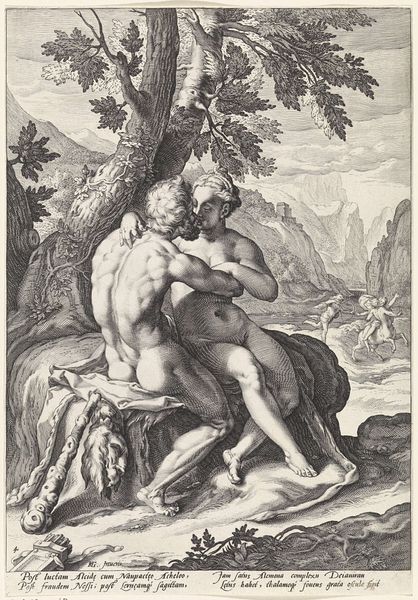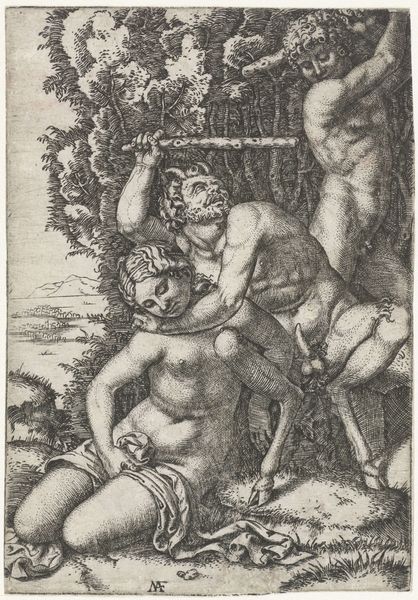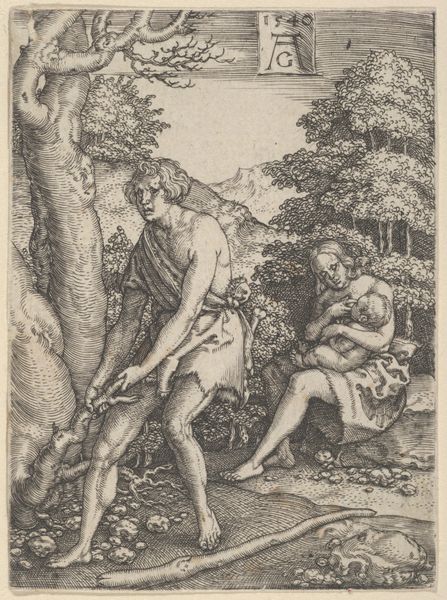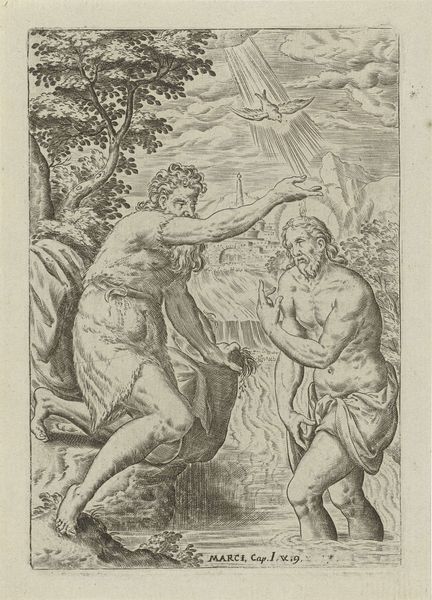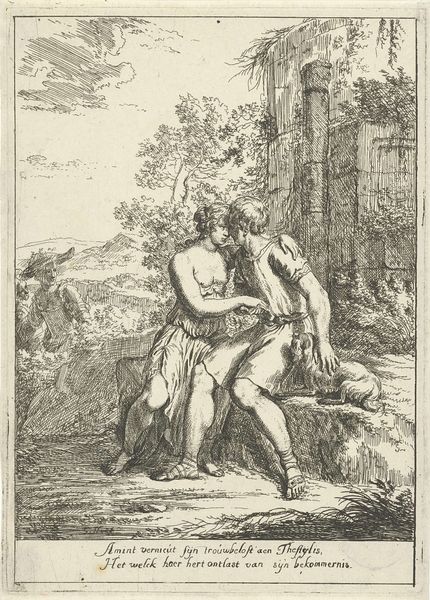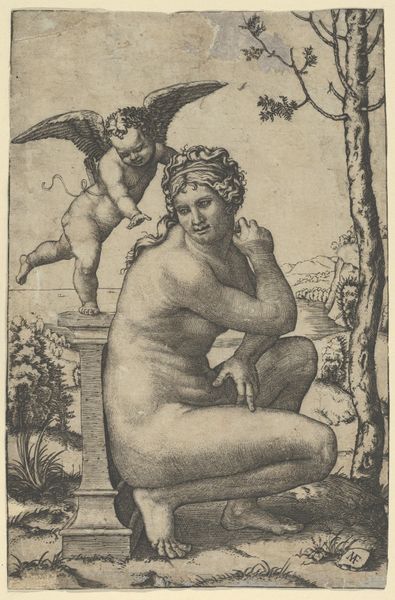
print, engraving
#
allegory
# print
#
mannerism
#
figuration
#
form
#
line
#
history-painting
#
nude
#
engraving
Dimensions: height 196 mm, width 138 mm
Copyright: Rijks Museum: Open Domain
Editor: So, this is Hendrick Goltzius's engraving, "Rust (Quies)", from 1582, currently housed at the Rijksmuseum. It's struck me that the sharp lines used to create texture throughout the landscape and on the figures contribute a rather contemplative and subdued mood. What can you tell me about it? Curator: Considering it was crafted in 1582, let's consider the materials involved, and the social context of printmaking. Engraving demanded meticulous labor. Think of the engraver's tools, the cost of copperplates, and the skill needed to create such intricate detail. Notice the use of "Rust," the material itself as a form of slowing? Editor: Yes, I hadn’t thought about the labor intensity involved in producing this print! Curator: Right. The availability and value of the copperplate shaped artistic decisions. Its distribution further democratized art compared to unique paintings. Consider the societal implication. "Quies", or rest, appears as a luxurious commodity enabled through material exploitation and class division. The labor to *rest*. See how the title of 'Quies' might mock its depicted subject by referencing material means? Editor: That is a strong reading that invites questions about its commissioning patrons too! I am wondering: was this meant as commentary or glorification of the "rest" achieved through commerce? Curator: Precisely. Also think about the role of prints in spreading ideas and challenging established artistic norms. Does "rest" allow you time to spread new artistic norms? Also the allegorical figures themselves suggest a social commentary related to wealth and leisure. Does that reading track with you? Editor: It does. Focusing on the print as a reproducible object, reveals fascinating insights into labor and consumption that challenge typical art-historical analysis focusing on Goltzius's hand and style, which almost romanticize the artist and artwork. I will certainly start thinking more about materials when studying other prints and artwork now! Curator: Excellent. This engraving showcases the materiality and means of artistic production. It's a fantastic case for approaching Mannerist prints as products tied to material conditions.
Comments
No comments
Be the first to comment and join the conversation on the ultimate creative platform.
